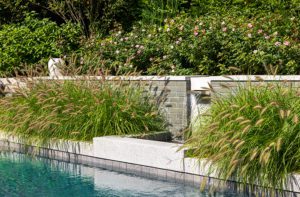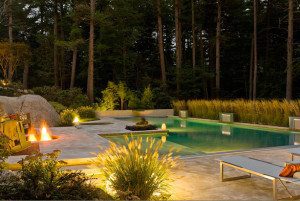Coming to Her Senses
July 12, 2012
The vivid paintings that emerge from Bunny Harvery's Rhode Island and Vermont studios are inspired as much by sound, smell and feel as by what she sees.
Text by Lisa E. Harrison
“Welcome to my world of ideas,” says artist Bunny Harvey, standing amidst hundreds of paintings in her 3,700-square-foot Providence studio. Life-size works (literally—she tends to favor canvases that mirror her own five-foot-six-inch frame) lean four or five deep against the walls of the light-filled one-time jewelry factory. Despite the sheer volume of inventory, Harvey, dressed in jeans and a frayed denim shirt with a scarf tied loosely around her neck, nimbly navigates her archives, sliding and lifting, to pull examples from the stacks. There’s decades’ worth of work—mostly oils on canvas or panel along with hundreds of works on paper—but she remembers the names and inspiration behind each with the ease of an English professor reciting Shakespeare’s sonnets.
In fact, an academic analogy may not be far off. Not only has Harvey taught painting at Wellesley College for thirty-six years, but intellectual curiosity inspires her art. “My paintings are a place where I can think, not come up with a beautiful solution, but give myself some time to see how the information fits,” she says. “I’m less interested in the product than the challenge to move through the material and see where it goes.”
While this open-ended creative process has held true during Harvey’s career, her subject has shifted over the years. After graduating from Rhode Island School of Design, Harvey landed a prestigious fellowship at the American Academy in Rome in the early 1970s. At the time, she tackled archaeological themes through an abstract lens. A longstanding interest in science then led to a study of particle physics in an attempt, she says, “to understand what it is that I know related to these complicated realms.” From there, she moved to landscapes.
As with her past work, Harvey’s landscapes are investigative at their core. Probing deeper than that which is merely visible to the eye, she incorporates smell, sound, touch. “Now my paintings are about all those other senses other than seeing,” she says. “By listening, you see.”
Harvey divides her time between Providence and picturesque Turnbridge, Vermont, where she has two studios, one designed to mimic the proportions and feel of a studio at the American Academy in Rome. In Vermont, she finds rich fodder for discovery and an entirely different landscape to explore.
Harvey’s persona is palpable in her paintings. A self-described adventurer (she and her husband, Frank Muhly, have hitchhiked twice across the country), she possesses an inherent curiosity and sense of wonder, the ability to imagine the unexpected, even on a micro level. A vibrant landscape entitled Field Chatter is about listening to grasshoppers, while Waiting for Dragonflies imagines the theoretical impossibility of sneaking up on insects that have 360-degree vision. Hoping for Trout toys with the expectation that many a fisherman knows all too well: a yearning to see something that isn’t there.
While the sensory pursuits behind Harvey’s work are complex (deftly playing with color, light and shadow, she’s covered themes from wind, smell and texture to shifting temperature, memory and expectation), her creative process is laced with exuberance. For years she combed the streets of Providence’s Jewelry District, seeking inspiration from metal castoffs in empty parking lots. Some of her finds—rusty locks, tarnished pins and charms—are still displayed in her studio, while the rest are packed in dozens of boxes. She laughs about the time a police officer mistook her, bundled in a coat from a favorite consignment shop and fresh from the gym, for a homeless person. When she held up a beautifully weathered spark plug to plead her purpose, he shook his head in disbelief and offered a ride to the shelter.
This same sense of discovery, a willingness to let go and see her surroundings in new ways, still propels the artist today. “I like to get lost,” she says. “I try to make environments where it’s interesting to get lost in terms of reverie and being able to figure out what’s there.”
And therein lies the greatest appeal of Harvey’s multifaceted creations: we, the viewers, get to accompany the artist on her spectacular journey.
To see more of her work, visit www.bunnyharvey.com.
Share
![NEH-Logo_Black[1] NEH-Logo_Black[1]](https://b2915716.smushcdn.com/2915716/wp-content/uploads/2022/08/NEH-Logo_Black1-300x162.jpg?lossy=1&strip=1&webp=1)













You must be logged in to post a comment.